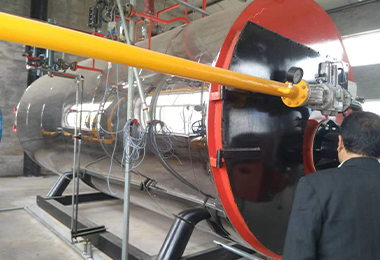
Sep . 06, 2024 15:35 Back to list
Affordable Oil Steam Boiler Prices - Quality Solutions for Your Heating Needs
The Economics of Oil Steam Boiler Prices
Oil steam boilers have been a crucial part of industrial processes and heating systems for many decades. As businesses and manufacturers seek efficient and cost-effective solutions for their energy needs, understanding the price dynamics of these boilers becomes essential.
Factors Influencing Oil Steam Boiler Prices
Several factors directly impact the pricing of oil steam boilers. Firstly, the type and size of the boiler play a significant role. Larger boilers that produce more steam generally cost more. Additionally, the complexity of the boiler design—whether it features advanced technology for improved efficiency or is built to meet specific regulatory standards—can further influence the price.
Another significant factor is the materials used in manufacturing the boiler. High-quality stainless steel and other durable materials increase the cost but also enhance the longevity and efficiency of the boiler. Over time, investing in higher-quality materials can lead to savings on maintenance and replacement costs.
Market Trends and Price Fluctuations
oil steam boiler prices

The oil market is volatile, and fluctuations in oil prices can significantly influence the cost of oil steam boilers. When oil prices rise, the cost of operating these boilers increases, which can lead to higher demand for more efficient models, thus driving up their prices. Conversely, during periods of low oil prices, manufacturers might lower their prices to remain competitive.
Additionally, the global shift towards renewable energy sources has begun to affect the oil steam boiler market. As companies seek to reduce their carbon footprint, they are increasingly considering alternative energy solutions. This transition can create a temporary dip in oil boiler sales, potentially leading to lower prices. However, this also means that oil steam boiler manufacturers might innovate and enhance efficiency, which may maintain premium pricing for advanced models.
The Role of Regulations
Government regulations aimed at reducing emissions also impact the price of oil steam boilers. Stricter regulations often require manufacturers to invest in technology that reduces harmful emissions, which can increase production costs. These costs are then passed on to consumers. Businesses looking to invest in oil steam boilers must factor in these potential regulatory costs when budgeting.
Conclusion
In conclusion, oil steam boiler prices are influenced by a myriad of factors, including size, materials, market trends, and regulations. As businesses navigate the complexities of energy needs and financial constraints, understanding these dynamics becomes essential for making informed investment decisions. With the ongoing changes in the energy landscape, businesses must stay abreast of technological advancements and market shifts to optimize their purchasing strategies. Ultimately, selecting the right oil steam boiler involves not just looking at the initial price but considering the long-term operational efficiency and compliance with future energy regulations.
-
High-Efficiency Commercial Oil Fired Steam Boiler for Industry
NewsJul.30,2025
-
High-Efficiency Biomass Fired Thermal Oil Boiler Solutions
NewsJul.30,2025
-
High Efficiency Gas Fired Thermal Oil Boiler for Industrial Heating
NewsJul.29,2025
-
High-Efficiency Gas Fired Hot Water Boiler for Sale – Reliable & Affordable
NewsJul.29,2025
-
High Efficiency Biomass Fired Hot Water Boiler for Industrial and Commercial Use
NewsJul.29,2025
-
High-Efficiency Biomass Fired Hot Water Boiler for Industrial Use
NewsJul.28,2025
Related PRODUCTS






















